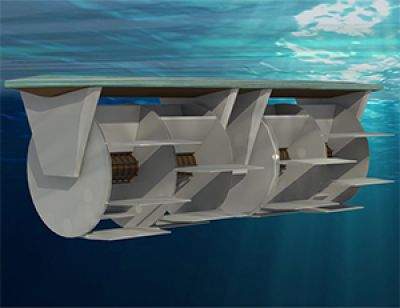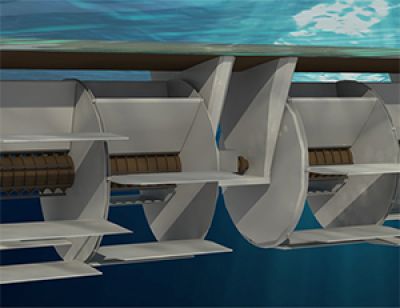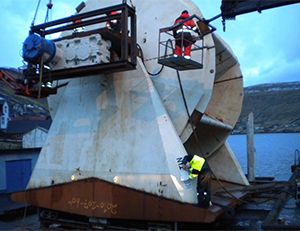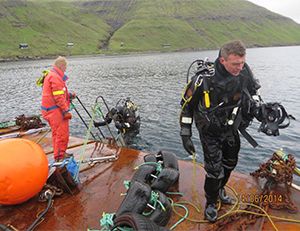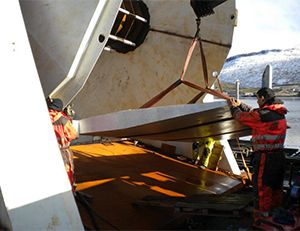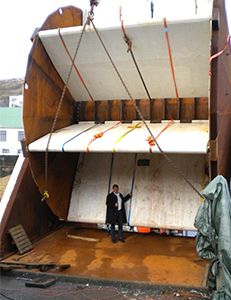Test of the tidal power plant at the Eidersperrwerk
In June 2014, our first tidal power plant of the completely new, patent-protected type Atlantisstrom was tested on the Faroe Islands and already connected to the public grid for test purposes. It is offering this invention for sale to ambitious investors.
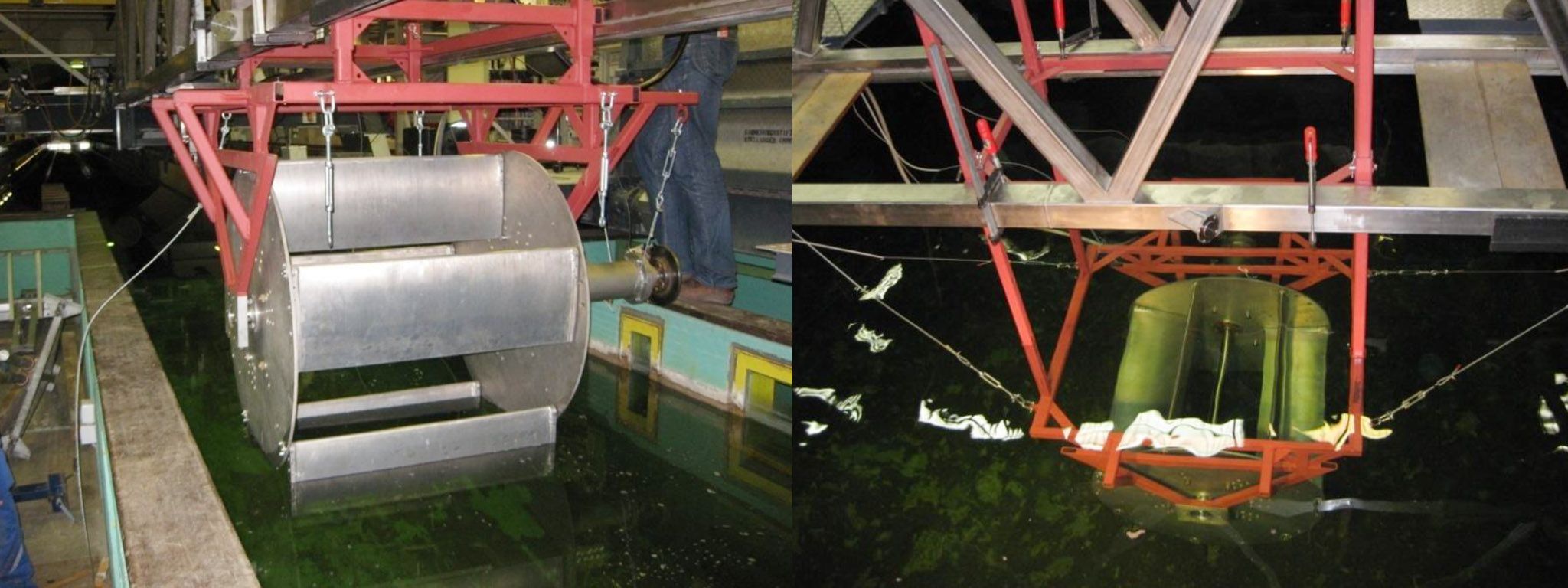
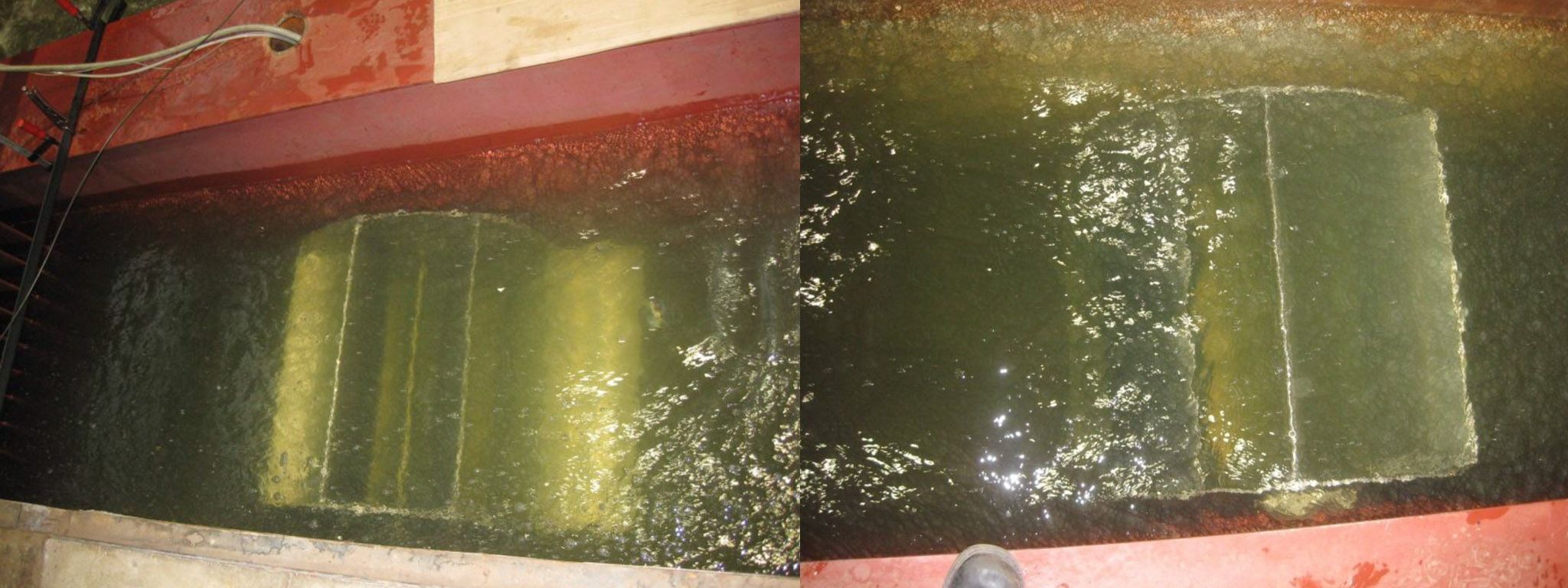
Test at the TU Braunschweig
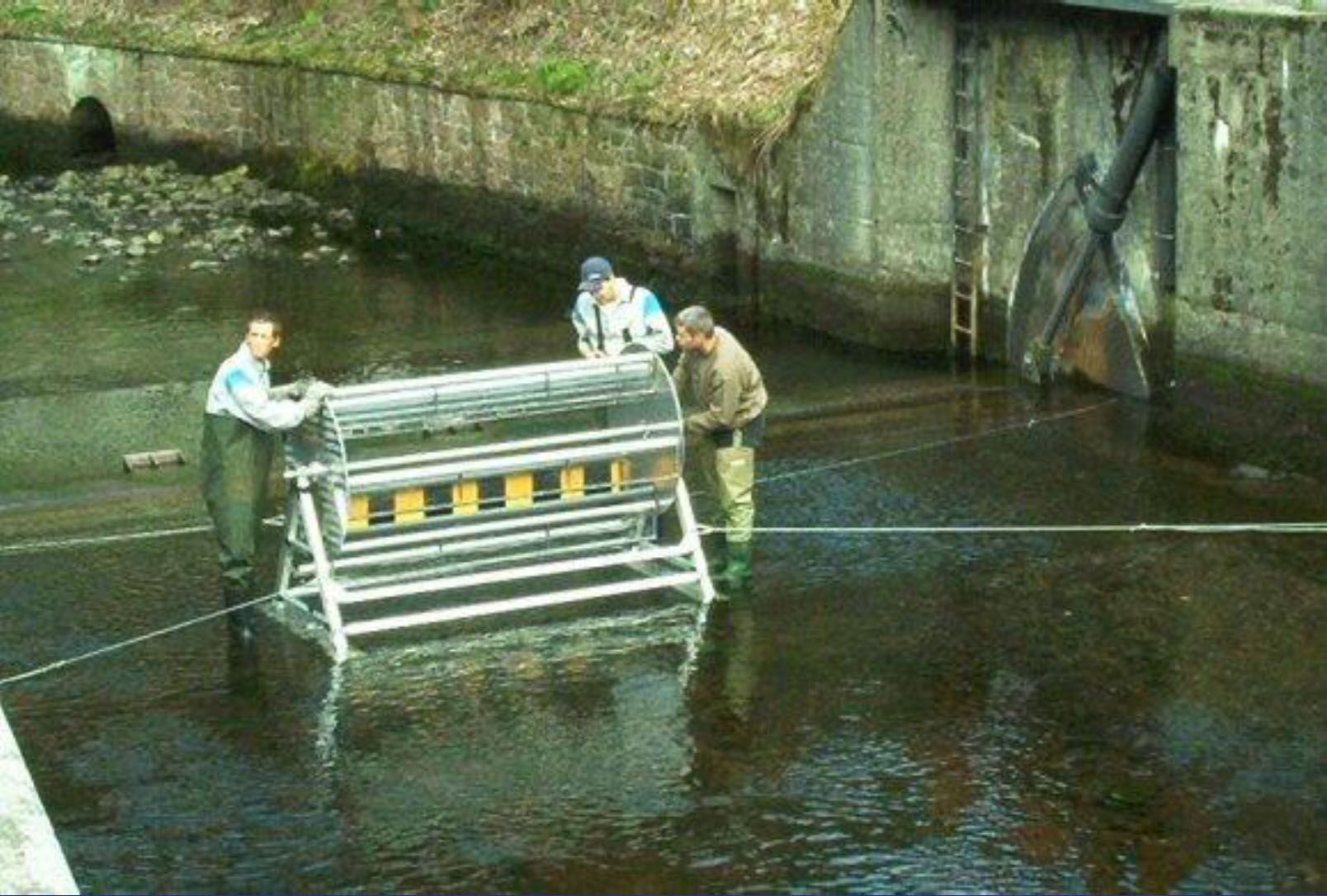
Test at the outlet of the Okertalsperre 2004
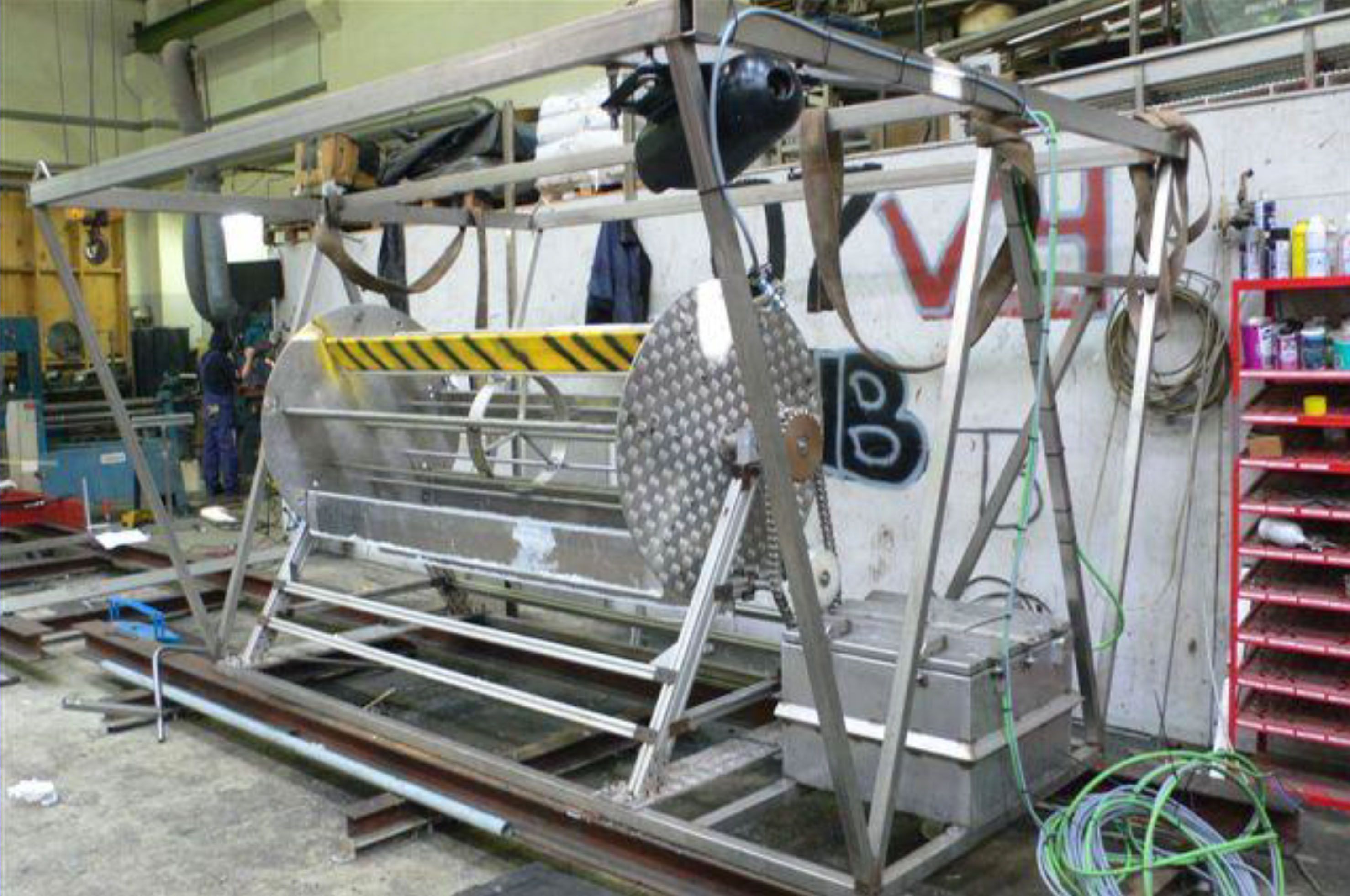
Test of the first prototype under a ship 2010
This power plant has a diameter of eight meters and a width of five meters.
In contrast to the well-known prototypes of tidal power plants, this is not a rotor type with the well-known disadvantages such as endangering the fauna, obstructing navigation and excessive costs, but a completely new, patented resistance rotor.
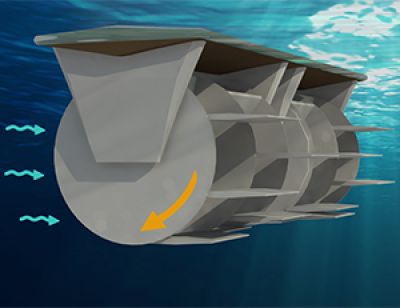
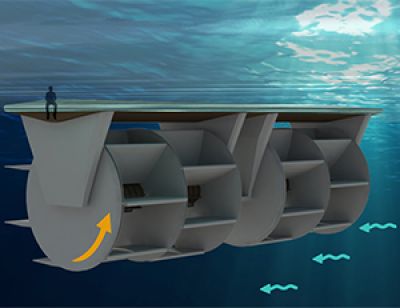
The power plant was installed in the Vestmanna Sound about 400 m off the coast of the island of Vagar. It was able to feed into the Faroe Islands' power grid via submarine cable. This test power plant consists of one segment of the series version designed for four segments.

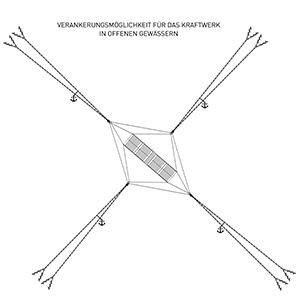

The series version with a length of 20 m and a diameter of 8 m was tested by the TU Braunschweig in the flow channel and by the FU Berlin in the drag channel and the expected performance was calculated. You can view this calculation under the item "Tests at TU Braunschweig and FU Berlin".
As an investor, why should you be excited about this invention?
In contrast to the tidal power plants realized to date, our concept has a number of decisive advantages that give this completely new type of power plant enormous market potential:
1. Unlike rotor power plants, the turbine operates completely submerged. It therefore neither obstructs shipping nor disturbs the visual appearance of the waters. Depending on the speed of the ocean current, our tidal power plant rotates only three to five times per minute.
2. As a result, the steel flaps move through the water at a maximum speed of 15km/h; under generator load, the speed is even lower. In contrast, the speed of the moving parts of all rotors is more than four times as high. Furthermore, the lower part of our system is always open for swimming creatures. Therefore, our system practically does not harm swimming organisms. As a result, we received the building permit from the Faroe Islands within a few weeks.
3. The main advantage of Atlantisstrom is the much lower manufacturing costs compared to rotor concepts due to the simple and low-maintenance design and the use of near-series components such as gearbox, generator and frequency converter.
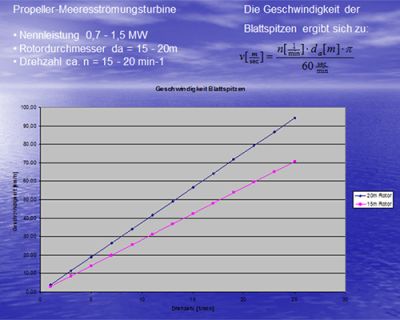
4. We have received offers for all components, which we will gladly make available to potential interested parties. This brings us to a total cost of 2 million euros - (for a four-segment turbine with a length of 20 m and a diameter of 8 m). This amount corresponds to less than one tenth of the sum that is to be estimated for rotor power plants in a rough estimate as construction costs per kilowatt. This is because the Atlantisstrom concept incorporates a new type of drag rotor which, to our knowledge, is the only one capable of generating electricity from tidal power at market prices.
5. If our power plant is installed in a blockage situation, such as in dams at the Delta plant in Holland, a particularly high energy yield can be expected.
